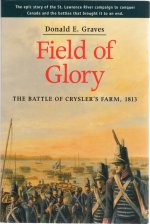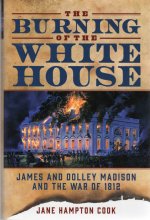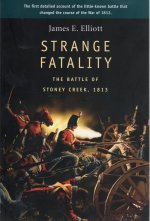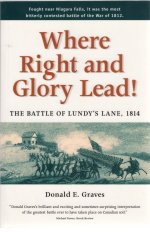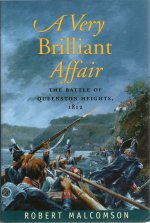Guide to Sources for Research into the History of the War of 1812
Land Operations
The War of 1812: Land Operations : George Stanley (Toronto : Macmillan, 1983)
This classic history is a vital part of Canada's past. The United States declared war on Great Britain and sent its armies to invade Upper and Lower Canada: the Americans, with due deliberation, chose the time and the place, forcing war on British North America when Great Britain was heavily involved in the struggle against Napoleon Bonaparte. The avowed objects of this act of political violence were to extract maritime concessions from the British, to put an end to the British-Indian alliance, and to conquer Canada. After three years of fighting, the U.S. had accomplished little and had been compelled to yield some of their territories in the West and on the Atlantic coast to combined British and Canadian forces assisted by Indian warriors. A new era of American-Canadian relations had commenced, one that has lasted in modified form until present day.
Field of Glory: The Battle of Crysler's Farm, 1813 : Donald Graves (Toronto : Robin Brass Studio, 1999)
From the foreword: "To both the United States Army and American military historians the 1813 battle of Crysler's Farm has always been regarded as an unmitigated disgrace, the absolute nadir of the history of the American regular army. In truth, it is a daunting tale: approximately 3,000 American regulars attacked some 1,200 British and Canadians and were driven off in disorder, suffering twice the casualties they inflicted. If the action is considered at all, it is only briefly for its obvious 'what not to do next time' lessons and then consigned to oblivion."
The Burning of the White House: James and Dolley Madison and the War of 1812 : Jane Hampton Cook (Washington : Regnery History, 2016)
From the dust jacket: "In 1814, Washington was set alight by the invading British, in anoutrage unequaled until the Japanese attack on Pearl Harbor in 1941. How did it happen? How did the scholarly president James Madison, 'the father of the constitution,' react? And how did his socialite wife, Dolley Madison, respond to the invation of the redcoats?"
Red coats and Grey Jackets: The Battle of Chippawa : Donald Graves (Toronto : Dundurn Press, 1994)
From the preface: "On the banks of the Niagara River, a few miles south of the great falls, a battle took place on 5 July 1814. For more than three hours on a hot summer afternoon, four thousand American, British, and Canadian soldiers, as well as native warriors from many natins, fought in the fields and woods surrounding Canadian Samuel Street's prosperous farm - when the fighting had ended, more than seven hundred lay dead or wounded. Red Coats and Grey Jackets is the story of this battle of Chippawa and the men who fought it."
Strange Fatality: The Battle of Stoney Creek, 1813 : James E. Elliot (Montreal : Robin Brass Studio, 2009)
From the preface: "This is a book about the Battle of Stoney Creek. An obscure action in an obscure war that remains largely ignored by the two main antagonists, the British and the Americans. Only the Canadians, upon whose estate most of the action took place, saw much worth remembering of a conflict historian Arthur Lower characterized as 'a succession of timorous advances and hasty retreats, of muddle-headed planning and incompetent generalship, intersperced with a few sharp actions and adroit manoeuvres which reflected credit on a few individuals and discredit on many.'"
Where Right and Glory Lead : Donald Graves (Toronto : Robin Brass, 1993)
From the preface: "This book is an account of a battle that took place on 25 July 1814 near the falls of Niagra. The battle of Lundy's Lane, as it is now commonly known, was fought between an American army commanded by Major General Jacob Brown and a British army commanded by Lieutenant General Gordon Drummond. After New Orleans, it was the single bloodiest military action of the War of 1812[.]"
A Very Brilliant Affair: The Battle of Queenston Heights, 1812 : Robert Malcomson (Annapolis : Naval Institute Press, 2003)
From the dust jacket: "As summer turned to fall in 1812, two armies watched each other warily across the turbulent Niagara River that formed the border between the United States and British Canada. On the American side, regular soldiers and state militia trained under the inexperienced, politically-appointed General Stephen Van Rensselaer, while on the British side General Isaac Brock worried about defending his long frontier with a meager force of regulars and militia and a group of native warriors about whom he held serious doubts. This is, surprisingly, the first full-length study of the Battle of Queenston Heights."


